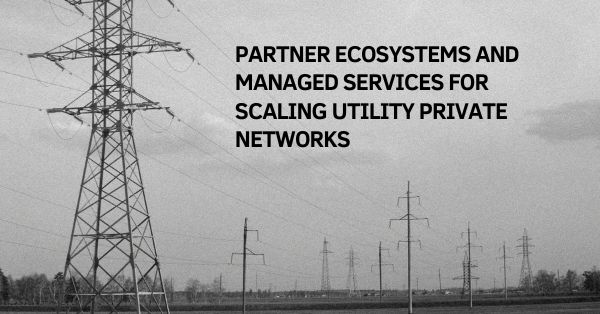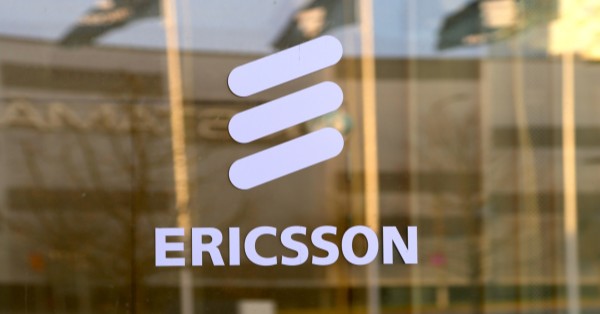As utility companies move from isolated pilots to full-scale deployment of private LTE and 5G networks, the importance of collaboration becomes undeniable. Private network success in the utility sector hinges not only on technology choices but on the strength and agility of the partner ecosystem that supports them. Vendors, system integrators, hyperscalers, and managed service providers (MSPs) all play critical roles in helping utilities navigate complexity, accelerate timelines, and build future-proof platforms.
In this seventh installment of the Connected Utilities series, we explore how utilities are building successful partner ecosystems and adopting managed services to scale their private network ambitions while balancing performance, cost, and compliance.
Building Strong Partner Ecosystems for Utility Private Networks
Building a utility-grade private network requires a multidisciplinary ecosystem. Radio vendors, core network providers, cloud and edge platform suppliers, system integrators, and cybersecurity specialists must work in concert. No single vendor can address the full utility operational landscape. Successful utilities are selecting best-of-breed partners for specific layers of the technology stack while using orchestration tools and governance frameworks to unify the experience.
Examples of key partners include:
- Radio vendors (e.g., Nokia, Ericsson, Samsung) for RAN infrastructure
- Core network software providers for EPC or 5GC functions
- Cloud and edge computing platforms (e.g., AWS Wavelength, Azure Private MEC) for latency-sensitive applications
- System integrators who customize deployments and manage vendor interoperability
- Specialty vendors for security, push-to-talk (PTT), or ruggedized mobile equipment
This shift from vendor silos to horizontal collaboration has prompted many utilities to build dedicated partner governance models—complete with onboarding frameworks, shared KPIs, compliance reviews, and joint service-level agreements (SLAs). These frameworks are often supported by centralized orchestration tools that provide holistic visibility across vendors and technologies, enabling proactive fault management, SLA tracking, and compliance reporting.
Utilities are also adopting partner evaluation scorecards that assess technical compatibility, long-term roadmap alignment, and sustainability practices. This ensures that partners not only meet current needs but are capable of growing with the utility’s long-term strategic direction.
How Managed Services Help Utilities Scale Private Networks
While some utilities prefer a do-it-yourself (DIY) model, others—especially those with lean IT/OT teams—are turning to managed service providers to maintain and scale their private networks. Managed services allow utilities to offload routine tasks such as:
- RAN and core network monitoring
- Patch management and software updates
- Threat detection and response
- SLA enforcement and performance optimization
- Device lifecycle management
Utilities benefit from MSPs’ domain-specific experience, access to 24/7 support, and predictable OPEX-based pricing. This approach also improves agility, allowing utilities to focus on grid modernization, DER integration, and customer experience, while leaving the technical details of network operation to specialized providers.
In some cases, co-managed models are emerging, where utilities retain control over strategic aspects (e.g., policy enforcement, architecture) but delegate operational tasks (e.g., firmware updates, telemetry collection) to trusted partners. This hybrid approach offers the best of both worlds: strategic oversight with operational scalability.
Additionally, many MSPs now offer modular services through marketplace models, allowing utilities to subscribe to only the components they need—such as security monitoring or edge device management—on demand. This subscription-based flexibility helps reduce CAPEX and ensures that network services can evolve alongside changing business and regulatory needs.
Driving Utility Network Innovation with Strategic Partnerships
Beyond technical operations, partner ecosystems enable utilities to pursue innovation faster. For instance, a drone surveillance vendor may integrate with a utility’s edge compute platform to deliver AI-powered inspection workflows. Or, a digital twin platform may plug directly into the utility’s private network and GIS data for live simulation and training.
Utilities are also increasingly participating in industry consortia, testbeds, and co-innovation programs to evaluate new technologies collaboratively. These innovation ecosystems reduce risk by:
- Validating multi-vendor interoperability in lab settings
- Aligning solution development with real-world utility requirements
- Allowing pre-certification of new devices, apps, or services for use on the utility’s network
Several utilities are forming strategic innovation hubs—internal teams tasked with scouting new technologies, launching pilot programs, and evaluating partner proofs-of-concept. These hubs often coordinate with innovation labs or universities to experiment with technologies like AI-driven predictive maintenance, remote robotic inspections, or adaptive grid orchestration.
By strategically aligning innovation partners with business goals, utilities create a virtuous cycle of experimentation, learning, and scaling. They also benefit from reduced time-to-value when partners offer pre-integrated solutions validated on similar network architectures.
Table: Strategic Partner Types and Their Roles in Private Utility Networks
| Partner Type | Role in Private Network Strategy |
|---|---|
| RAN Vendors | Design and deploy base stations, antennas, and RF systems |
| Core Network Providers | Deliver 4G/5G core software, slicing, and session management |
| System Integrators | Manage multi-vendor environments, customize orchestration, and ensure compliance |
| Managed Service Providers | Operate and maintain networks, provide SLAs, and provide technical support |
| Cloud & Edge Platforms | Host MEC services, analytics, and AI at the edge |
| Security Vendors | Implement encryption, identity, and threat detection systems |
| Innovation Partners | Offer use-case pilots, AI tools, simulation environments, and IoT platforms |
Why Ecosystem Thinking is Critical for Utility Private Networks
Private networks in the utility sector are no longer point solutions—they are platforms that must interconnect people, processes, and partners to drive efficiency and effectiveness. As utilities evolve their capabilities and scale deployments, the ability to work across partner ecosystems becomes a strategic advantage. Those that invest in partner governance, co-innovation, and managed service frameworks will not only de-risk deployment but also accelerate their journey toward a smarter, safer, and more sustainable future for utilities.
In the next blog in the Connected Utilities series, we’ll examine sustainability and ESG-linked drivers for private networks, from clean energy enablement to resilience under extreme weather and smarter resource allocation.
Explore More from the Connected Utilities Series
Continue your learning journey with our full Connected Utilities blog series:
- Why Utilities Are Investing in Private Networks to Power the Digital Grid
- Strategic Use Cases for Private Networks in the Utility Sector
- Trends Accelerating Private Network Adoption in the Utility Sector
- Deployment Architectures and Spectrum Strategies for Utility Private Networks
- Edge Computing and AI for Predictive Utility Operations
- Governance and Lifecycle Management of Utility Private Networks
- Partner Ecosystems for Scaling Utility Private Networks
- Sustainability and ESG Drivers for Private Networks
- Monetization and Shared Use Models for Utility Private Networks
- Cybersecurity and Zero Trust for Utility Private Networks
- Future Roadmap – 5G Advanced and the AI-Driven Grid
Strengthen Your Utility Private Network Strategy
Assess your grid’s 5G readiness with our industry-specific tool, uncover gaps, and get clear, executive-ready insights to plan and deploy with confidence. Check Readiness & Premium Plans






























